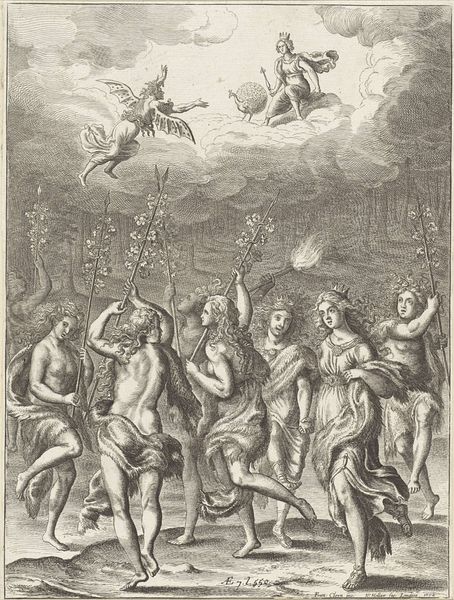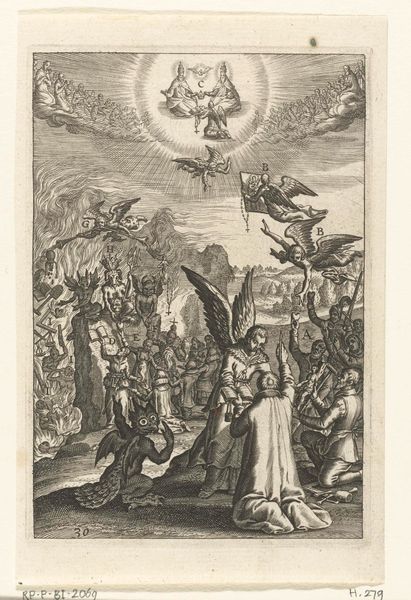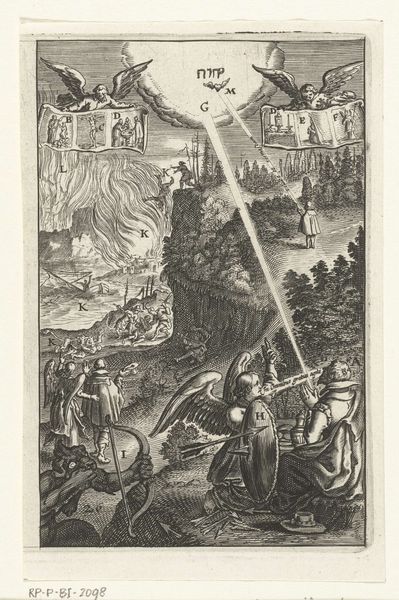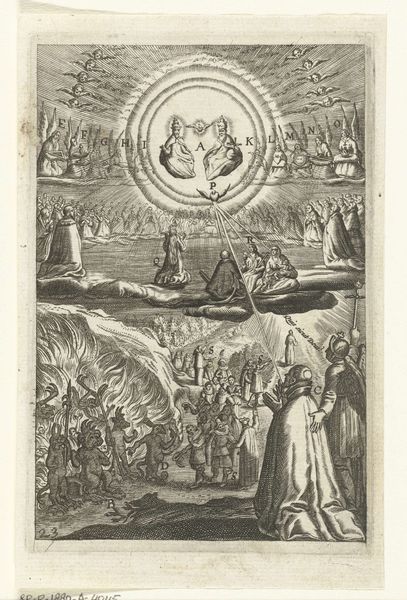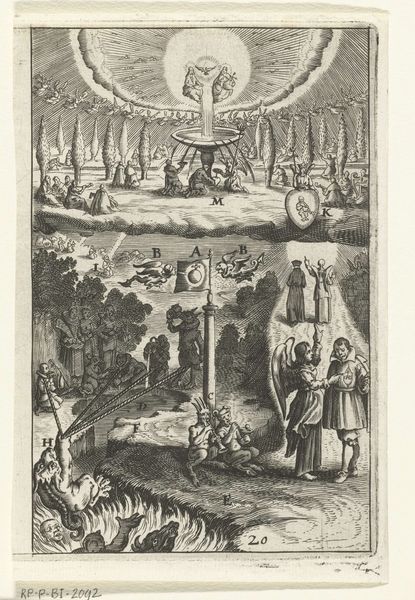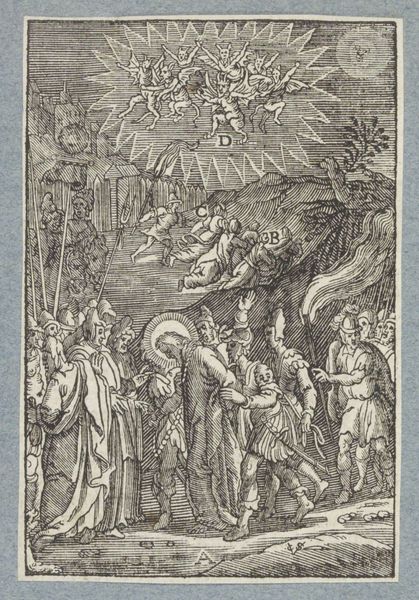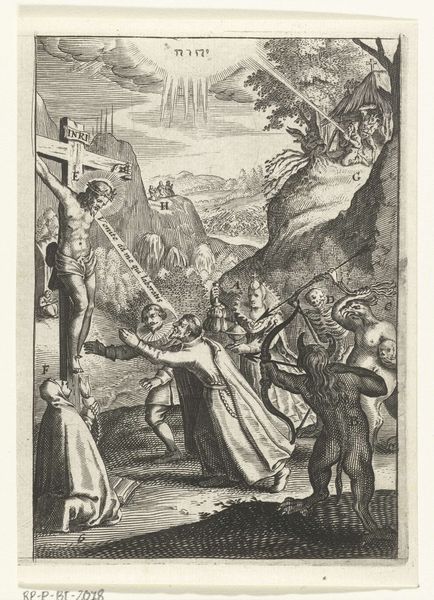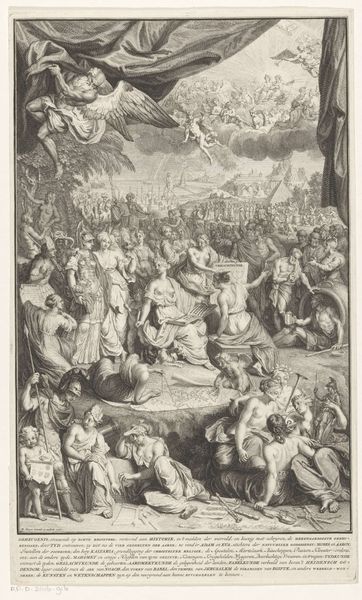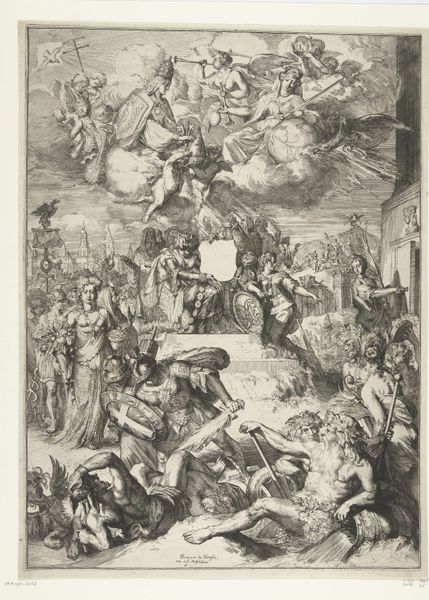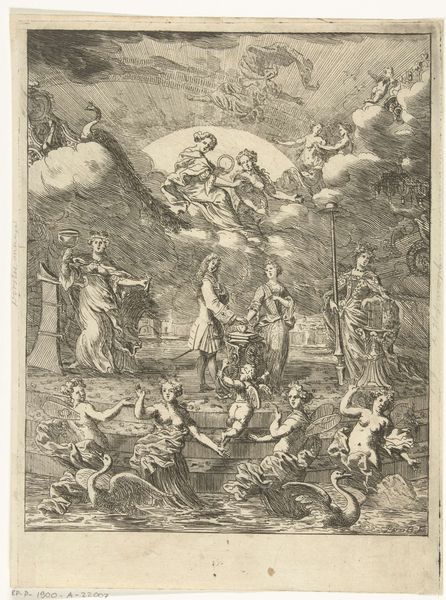
engraving
#
allegory
#
baroque
#
figuration
#
history-painting
#
engraving
Dimensions: height 121 mm, width 67 mm
Copyright: Rijks Museum: Open Domain
This print, likely from the 17th or 18th century, was made in Amsterdam and attributed to P. Mortier. It depicts Amor, or Cupid, unleashing people from their bonds. The image presents a fascinating commentary on social mores and institutions. We see figures throwing off their shackles, celebrating a newfound freedom, perhaps from societal constraints or loveless marriages. The cherubic figures, classical references to Ovidius Naso, and the act of liberation itself, were popular tropes used by artists to celebrate progressive ideals and question existing power structures. The print likely reflects the values of the Dutch Republic at the time. To fully understand the artwork, one might research the publishing context in Amsterdam during this period, as well as the artistic conventions used to convey ideas about love and freedom. The meaning of art is always contingent on its specific social and institutional context.
Comments
No comments
Be the first to comment and join the conversation on the ultimate creative platform.
